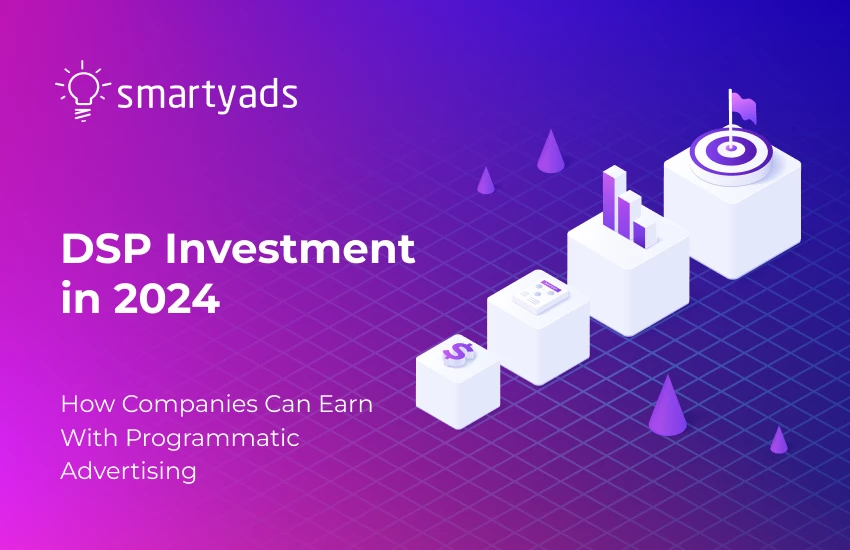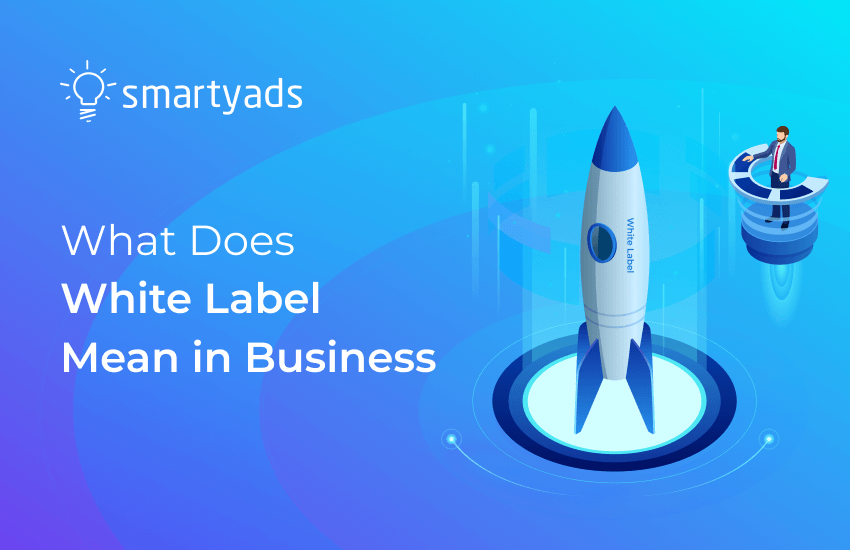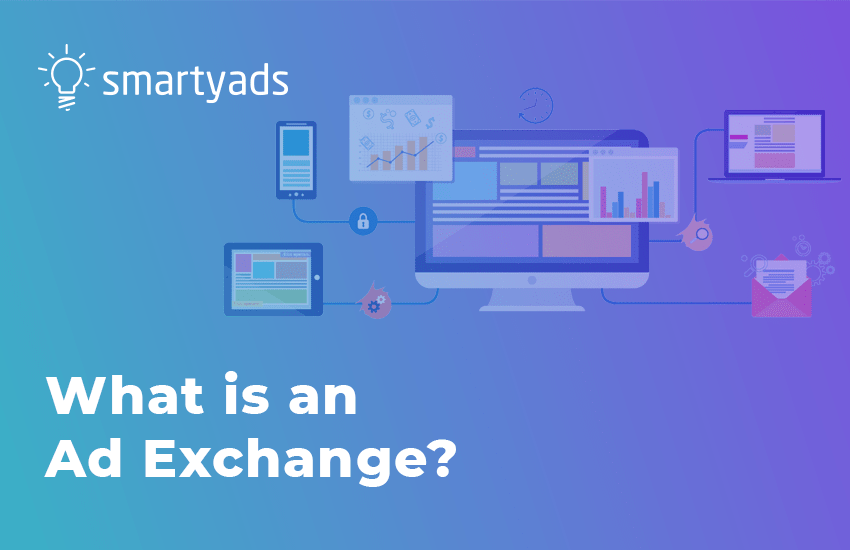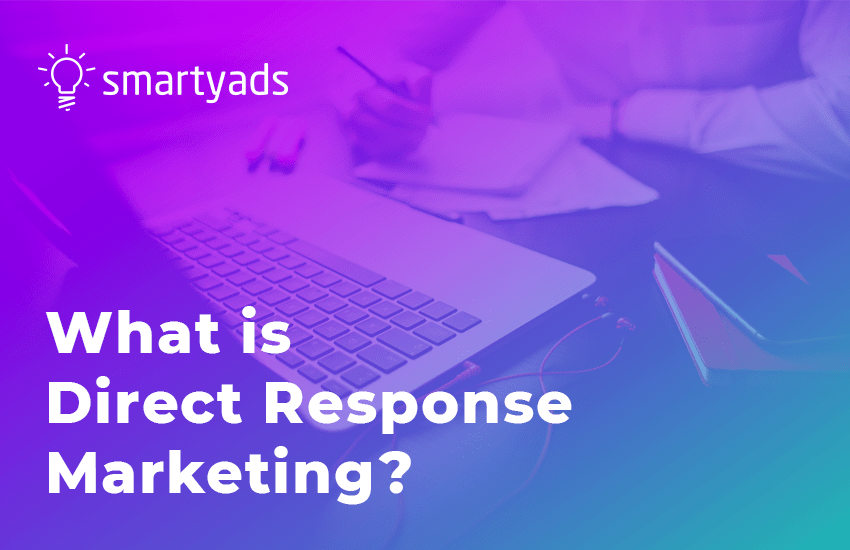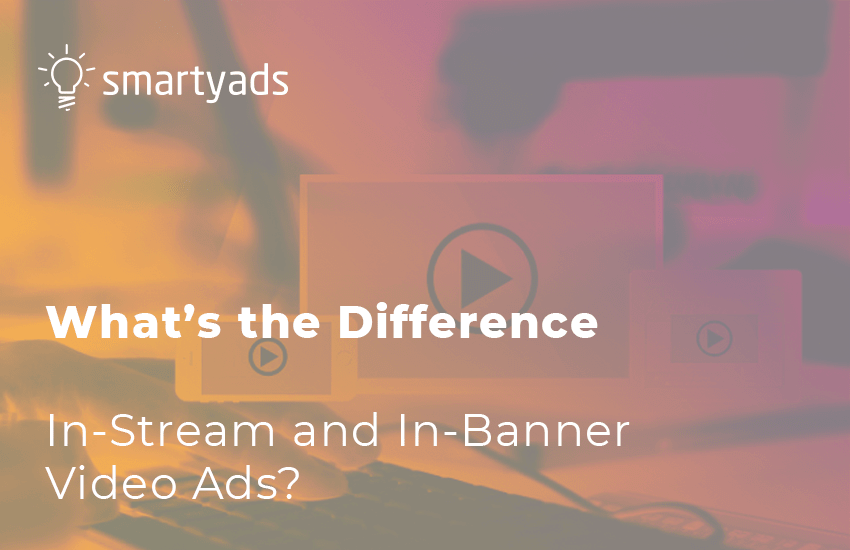This article aims to familiarize retailers of all kinds with the opportunities and perspectives of entering the programmatic advertising market. If you buy ad inventory, then you will definitely find something useful for yourself and your business in this guide. Moreover, this article will deepen your knowledge if you have experience with DSPs or even own your platform.
We have collected non-trivial information about programmatic advertising to improve buying traffic experience and optimize revenue. Enjoy your time reading!
Programmatic advertising: why small players should join the industry?
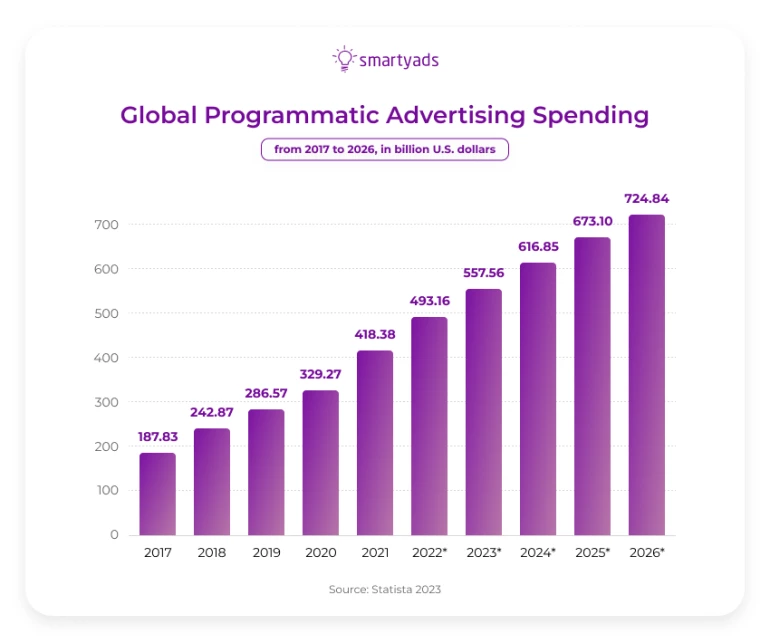
Our main message to those hesitant about investing is that the market benefits from maintaining artificial entry barriers for new retailers. By the end of this article, you will also come to this conclusion, so let us speak the language of facts.
First, the programmatic advertising market is growing steadily and will continue to grow. Second, the industry is undergoing a transformation crisis, which analysts predict will be resolved by developing new technologies. In other words, despite the challenges, growth will continue, and its pace will remain impressive.
So why is it beneficial for the market to have some artificial barriers preventing new players from entering By new players, we mean companies investing in developing their programmatic platforms. The answer consists of three points.
- Intermediate participants in advertising bidding, such as retail media networks (RMNs), want to keep profits private. They are growing in number and raising funds. According to McKinsey data, more than ten large RMNs have emerged in recent years, and their cost has increased three times.
- Big players such as Apple will have their own DSPs, it is unprofitable for them to have many small competitors. Monopolists want to continue dominating, there is nothing unusual in this.
- The costs of chain bidding are very high, so ad slot publishers lose up to 35% of their profits. Accordingly, this profit is received by the owners of DSPs, among others.
So, for now, we'll consider the myth of the "train you missed" busted. Programmatic advertising is an industry that will continue to grow and develop. It's a good idea to join in 2024 if you've been thinking like this.
Next, let's move on to the main investment ad traffic buyers can make — DSPs.
How the demand-side platform has become a key revenue element for advertisers
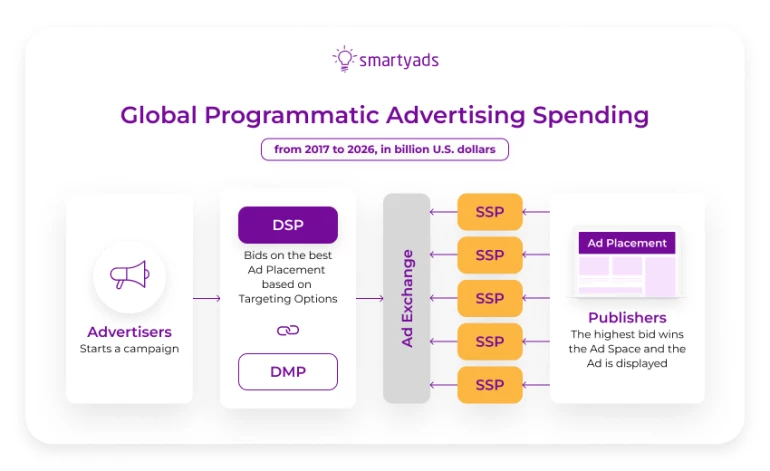
Since direct agreements between the parties became a thing of the past and programmatic advertising started to dominate the interaction, the role of software platforms, which are actually the main AdTech tools, has become fundamental. By and large, all advertisers currently rely on are DSPs. Naturally, this software can be of entirely different quality and functionality.
Everything you deal with is different program products. The result of advertising depends on DSPs for five main reasons.
- High-quality targeting. Not considering the data quality, here we talk only about the algorithms themselves: targeting the right ad slot relies on specific algorithms that may be more effective or less effective. It depends on developers' skills and, in general, on the respect of the platforms’ service providers.
- Correct price calculation. The program determines whether it is profitable or unprofitable to buy a place, so there should be a feedback and recalculation mechanism. In other words, only some successful bids are profitable. This process is based on DSPs in-platform calculation.
- Data management. The issue of data use is critical for now, and it is the actual evolutionary process of the industry development. The challenge is using as much information as possible to hyper-target consumers without violating privacy rules. Not an easy task, do you agree? We will discuss data issues in detail in the following sections.
- Transactions cost. All transaction and total platforms' expenses are overpayments and lost profits. There are various options for DSPs using paying, but each has a price, and sometimes it becomes a significant difficulty for scaling.
- Development capability. The programmatic targeting mechanism should be reviewed and developed along with changes in advertising campaigns. Moreover, this process is very much related to advertising traffic. For such purposes, it is necessary to involve either Advertising Development Specialists or implement machine learning mechanisms based on large amounts of data.
Now, let us move on to the challenges facing modern demand-side platforms and how technologies can overcome them.
Third-party data opt-out, DSPs look for ways forward
The main challenge of the AdTech industry today is the complete rejection of third-party data, which the market is steadily moving towards. Steadily moving means that it is still a long way off from a total rejection of information purchased or obtained in a non-confidential way, but it definitely will happen. And then all programmatic advertising, or at least the lion's share of it, will be based solely on first- and second-party data.
Here, we would like to quote Niki Bansal, whose interview about contextual targeting was very accurate in that fewer and fewer websites accept using cookies for targeting. And this trend will only grow over time.
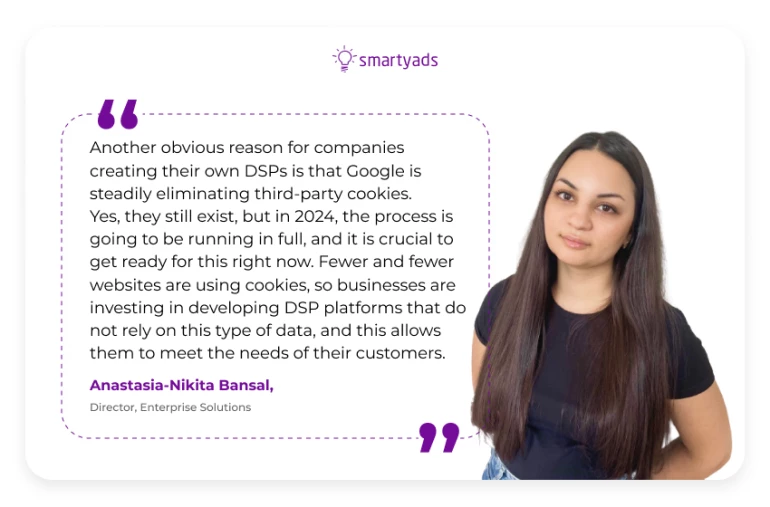
We won't repeat the many times mentioned initiatives of multinationals such as Google, Facebook, and Amazon to refuse third-party data, let's just get to the point. Yes, it can be solved. And we all have a stake in making it happen.
The light of the contextual targeting future
In one of our previous articles, we discussed in great detail the future of programmatic advertising, which is based on contextual targeting. In short, why contextual ads can help your business overcome the rejection of 3-rd party data and reach new heights:
- it focuses on the topic, group subject, page content, keywords, and other behavioral factors, including previous advertising preferences of the resource visitor;
- it is an entirely independent targeting system to form an integral framework with the first- and second-party data, providing an opportunity to create your repository of target users;
- real-time targeting mechanisms do not rely on historical behavioral patterns alone, they update the data when loading the page, select ads, and make a favorable bid for the advertiser.
Another important factor behind the success of a system that does not rely solely on third-party data is its ability to learn itself, better known as machine learning. Let's take an example of an AI-powered cookieless DSP that can be deployed under your brand. What this platform can do:
- remember which ads users have previously chosen to adjust contextual targeting;
- track resources that have shown the best conversion and prioritize them for bidding;
- optimize prices based on KPIs for different types of payment for ads, provide detailed statistics explaining changes, and much more.
Machine learning and AI-based targeting are the stuff of the future. And this future can be deployed quickly and be transparently for your business success.
What types of DSPs are available for companies
In one of our previous articles, we analyzed in detail how to choose the best way to develop a programmatic platform. In this section, we describe the main points just in passing.
Using ready-made demand-side platform
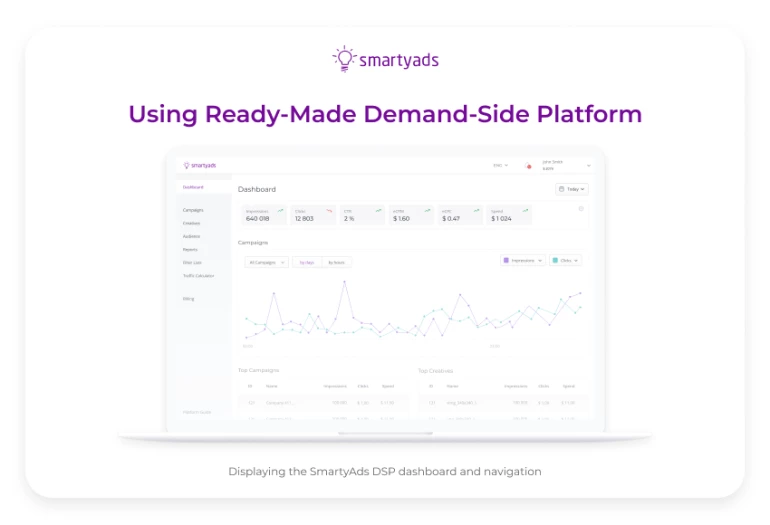
As one of those self-service demand-side platforms that we offer at SmartyAds. It's a ready-made solution, take it and buy the advertising inventory you need. It's an easy-to-use, intuitive platform, easy to track and analyze results.
However, the challenges for users begin at the stage of scaling up processes. Most brands and agencies don’t want to pay commissions, which reach a significant amount with increasing ad volumes. Although the percentage remains the same. In addition, advertisers are likely to need specific custom features that are unavailable in a ready-made self-service solution and cannot be deployed independently.
DSP built in-house or outsourced
It's not an easy solution, but it's respectable for those who have the money, strength, and competence. In both cases, you will bear all or almost all responsibility for the result. This can be both a plus and a minus. But this is an option where there are no restrictions at all. Everything rests only on the resources.
Large enterprises and global companies build platforms exclusively on their own or with the help of ghostly outsourced specialists, who transfer all ownership rights to their work. For small and medium-sized companies, development from scratch is often simply not profitable.
Deploy white-label DSP solution
White-label is an intermediary option equally available for companies of different types and sizes. Both small, middle, and large enterprises deploy ready-made platforms under their brands. And often, it is about one platform at first (!), and then time will tell.
The biggest achievements of white-label are:
- unlimited scaling;
- no high transaction fees;
- the ability to earn money through referrals;
- customization at all levels;
- extended support from Advertisement Marketing Experts.
Entrepreneurs have all the management options developers have within a white-label solution, except for direct access to the technical code.
Why do advertisers choose their own DSPs?
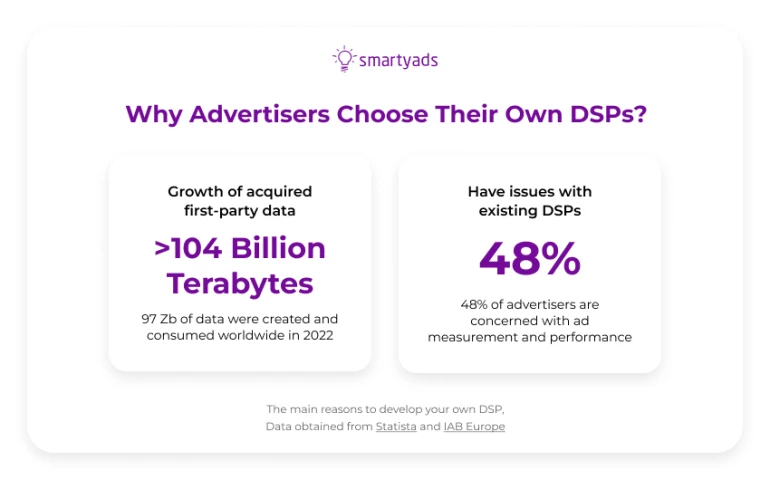
We have already noted that the best investment that ad traffic buyers can make is in their own DSPs. Most serious players choose platforms developed in-house/outsourced or deployed by third-party teams under their brands. As you can see from the image, the two main reasons are the amount of data acquired and the difficulty of using third-party DSPs on the service provider side. Let's expand on both of these statements.
- Data accumulation. When you use platforms that are owned by other companies, you are helping them build their own targeting database. This data is just as crucial for the future as successful targeting is vital for ongoing campaigns.
- Problems with using third-party platforms. Of course, they need to be customizable and transparent, and it is unlikely that the service provider will agree to show the technical code describing the targeting algorithm. DSP users can use the platform and get support in case of difficulties, but no more. This often leads to using many platforms simultaneously without the ability to identify the factors of success or failure in targeting.
Third-party DSPs also bring their results. If they meet your needs, you should not take urgent action. At the same time, good managers always look ahead, and we at SmartyAds try to be good managers and advisers for our partners!
Bottom line
The AdTech industry is going through challenging times, and it should come out of them full of new technologies and fresh players with great potential. We've found that the train is still waiting for you on the platform (sorry for the pun) and that it's still a good idea to make a large-scale programmatic investment in 2024. Looking ahead, it's a better idea now than it will be in a year because the number of competitors continues to grow.
We also discussed that the principal investment for an advertiser is to build its own DSP. And that among all the options available on the market, the most interesting are white-label solutions or platforms developed from scratch.
Please contact us if you would like to get advice on using, deploying, or developing DSPs. We will do our best to make your entry into the AdTech business or its expansion smooth, fast, and successful!
